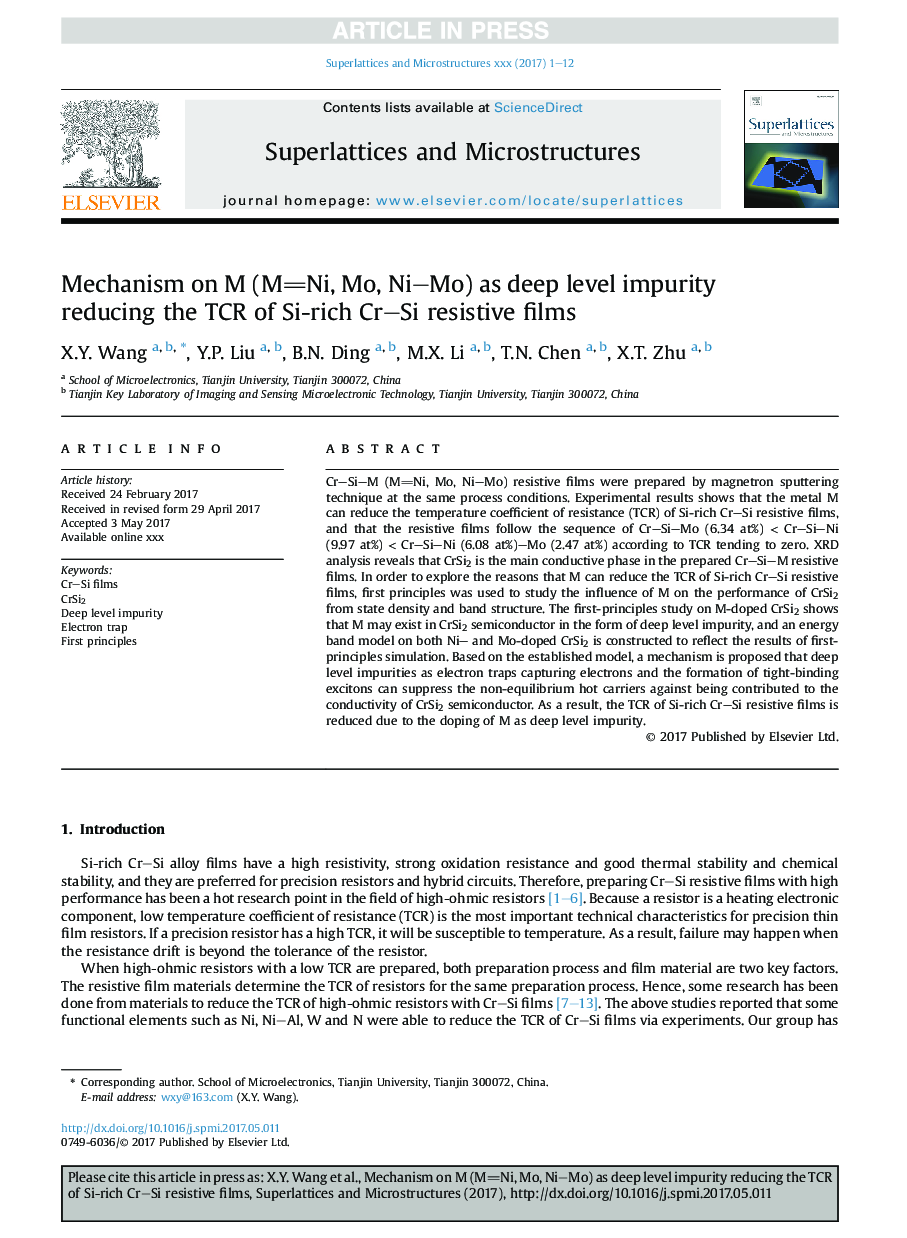| Article ID | Journal | Published Year | Pages | File Type |
|---|---|---|---|---|
| 7940230 | Superlattices and Microstructures | 2017 | 12 Pages |
Abstract
CrSi-M (MNi, Mo, NiMo) resistive films were prepared by magnetron sputtering technique at the same process conditions. Experimental results shows that the metal M can reduce the temperature coefficient of resistance (TCR) of Si-rich CrSi resistive films, and that the resistive films follow the sequence of CrSiMo (6.34Â at%)Â <Â CrSiNi (9.97Â at%)Â <Â CrSiNi (6.08Â at%)Mo (2.47Â at%) according to TCR tending to zero. XRD analysis reveals that CrSi2 is the main conductive phase in the prepared CrSi-M resistive films. In order to explore the reasons that M can reduce the TCR of Si-rich CrSi resistive films, first principles was used to study the influence of M on the performance of CrSi2 from state density and band structure. The first-principles study on M-doped CrSi2 shows that M may exist in CrSi2 semiconductor in the form of deep level impurity, and an energy band model on both Ni and Mo-doped CrSi2 is constructed to reflect the results of first-principles simulation. Based on the established model, a mechanism is proposed that deep level impurities as electron traps capturing electrons and the formation of tight-binding excitons can suppress the non-equilibrium hot carriers against being contributed to the conductivity of CrSi2 semiconductor. As a result, the TCR of Si-rich CrSi resistive films is reduced due to the doping of M as deep level impurity.
Keywords
Related Topics
Physical Sciences and Engineering
Materials Science
Electronic, Optical and Magnetic Materials
Authors
X.Y. Wang, Y.P. Liu, B.N. Ding, M.X. Li, T.N. Chen, X.T. Zhu,
